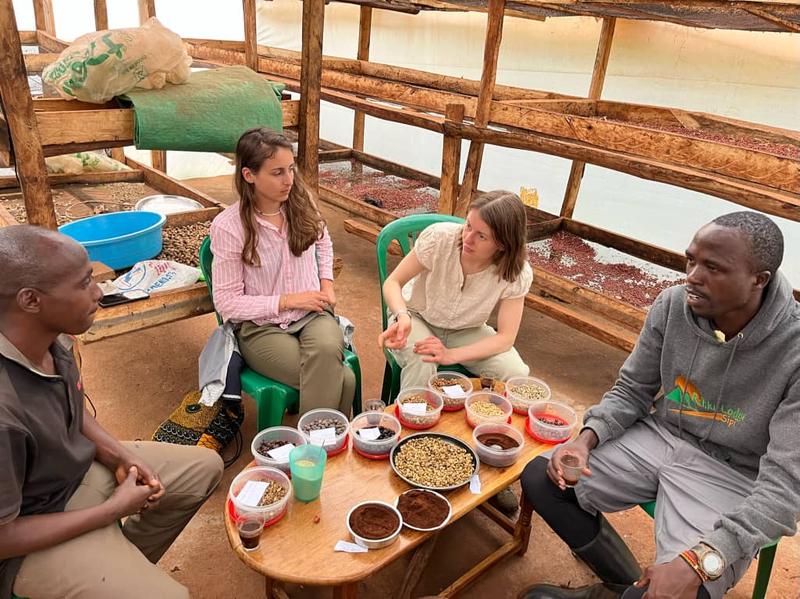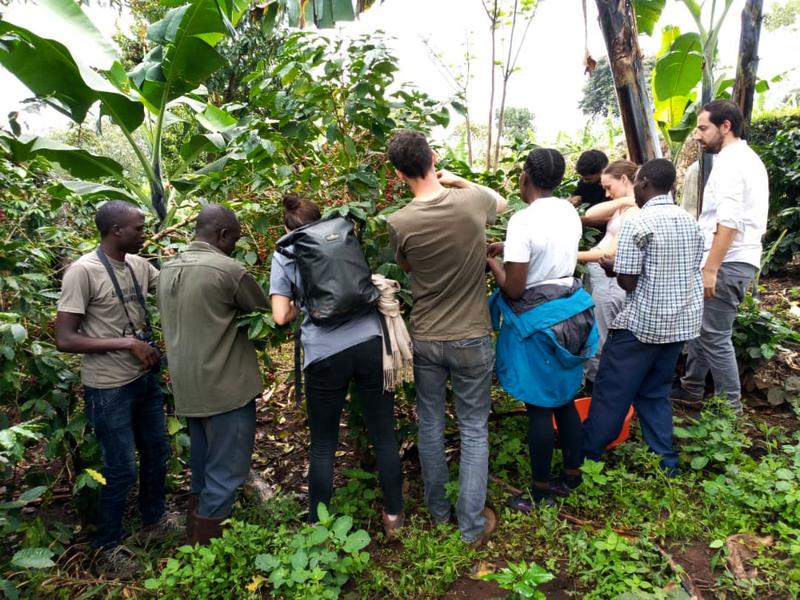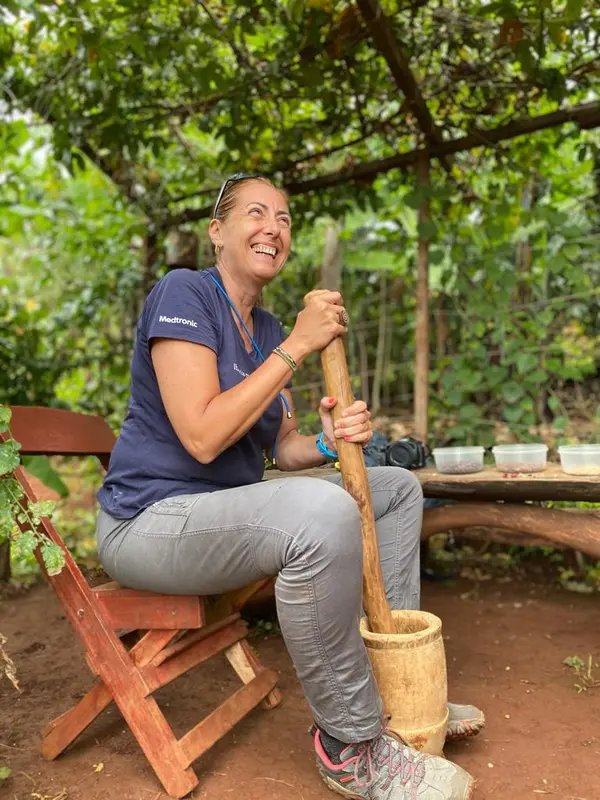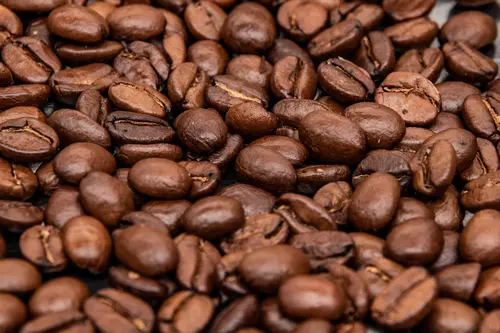Coffee tour experience
Are you a coffee lover and want to learn where, how, and when coffee was discovered?
The Coffee Tour
There are many things in Sipi that will activate your senses. Need something to delight your taste buds? Sipi produces some of the best organic Arabica coffee in Uganda. It has a delicious aroma and a unique rich taste that’s not found in coffee from other regions. Because of its untouched smooth sweet taste, coffee from Sipi has become a well sought after delicacy.
Wonder why this coffee is so good? We’ll take you on a coffee tour that will satisfy your curiosity and leave you wanting more.
Learn about Sipi Falls coffee from the best farmers in Sipi, with whom we’ve partnered. You’ll discover how it’s planted, harvested, and processed.
If you arrive in the harvesting seasons, you’ll even be able to pick ripe coffee from the Arabica coffee plantations.
Even better, you’ll be able to make your own cup of coffee from scratch. This involves roasting dried coffee, and later pounding or grinding it by yourself. You’ll watch as we prepare water in the local way and have your own cup of freshly brewed coffee within minutes.
The coffee tour will open up your mind to some traditions related to coffee and will give you a chance to interact with the local people who are very hospitable.
For a few minutes or hours, you’ll experience what life as a coffee farmer in Sipi feels like. It’s a very interesting and rewarding experience that will keep Sipi in your memories.

COFFEE HISTORY IN UGANDA
There are two types of coffee grown in Uganda, Arabica and Robusta. Robusta coffee is native to Uganda and was growing before foreigners ventured into the country. Foreign settlers introduced Arabica coffee to the country in the early 1900s.
By 1914, they had set up Arabica coffee farms in the country but this type did not do very well in some parts. Sipi is one of the most fertile areas of Uganda with great volcanic soils of Mount Elgon, heavy rainfall, and a high altitude. This favored Arabica coffee growth, turning it into one of the most beloved plants in the area.
It was during the mid-1970s that coffee saw an enormous boom in the country. Earlier, Brazil had been one of the world’s main suppliers of coffee, but the frost of 1970 diminished its production creating a global coffee shortage. This was a chance for other countries, including Uganda to increase their production. The demand was high so farmers increased production to meet it. With time, coffee became a valuable export in Uganda. Unfortunately, global coffee prices lowered in 1987 which greatly affected production in Uganda and other countries.
Arabica coffee is grown in the southwestern (Rwenzori Mountain region), eastern (Mount Elgon region), and northwestern (West Nile) parts of Uganda. Coffee farmers in the three regions process Arabica coffee differently which makes the end products have different tastes. For instance, the coffee in western Uganda is dry processed while coffee is washed in the eastern region before processing hence giving it a cleaner feel.
COFFEE HISTORY IN UGANDA
There are two types of coffee grown in Uganda, Arabica and Robusta. Robusta coffee is native to Uganda and was growing before foreigners ventured into the country. Foreign settlers introduced Arabica coffee to the country in the early 1900s.
By 1914, they had set up Arabica coffee farms in the country but this type did not do very well in some parts. Sipi is one of the most fertile areas of Uganda with great volcanic soils of Mount Elgon, heavy rainfall, and a high altitude. This favored Arabica coffee growth, turning it into one of the most beloved plants in the area.
It was during the mid-1970s that coffee saw an enormous boom in the country. Earlier, Brazil had been one of the world’s main suppliers of coffee, but the frost of 1970 diminished its production creating a global coffee shortage. This was a chance for other countries, including Uganda to increase their production. The demand was high so farmers increased production to meet it. With time, coffee became a valuable export in Uganda. Unfortunately, global coffee prices lowered in 1987 which greatly affected production in Uganda and other countries.
Arabica coffee is grown in the southwestern (Rwenzori Mountain region), eastern (Mount Elgon region), and northwestern (West Nile) parts of Uganda. Coffee farmers in the three regions process Arabica coffee differently which makes the end products have different tastes. For instance, the coffee in western Uganda is dry processed while coffee is washed in the eastern region before processing hence giving it a cleaner feel.

Features of Arabica coffee plants in Uganda
Arabica coffee plants do well at higher altitudes of 1700-2500 meters above sea level.
Arabica coffee plants are perennial. If you take good care of them, they can last several years.
They grow up to ten meters in the wild, but they regulate the length in the Arabica coffee plantation farms to make it convenient for harvesting. Most farmers keep it 2-5 meters.
The coffee beans are wrapped in berries that are harvested when ripe.
The coffee berries ripen at different times, so harvesting spans several months.


The Local Coffee Making Process in Sipi
They have introduced modern ways of coffee processing in Uganda. However, most local farmers in Sipi use a mixture of traditional and modern ways of processing.
Coffee harvesting
Farmers harvest Arabica coffee between the months of October and February in Sipi. Coffee farmers hand-pick the deep-red ripe berries from the trees, leaving the unripe ones. If you take our coffee tour during harvesting season, you’ll be able to participate in this activity.
Coffee pulping
This involves the removal of the outer skin. They do this using a small machine called ‘Tinget’ in the local language. These machines are used by small-scale local farmers, while larger coffee processing companies use the wet mill for this activity.
Washing
Farmers wash coffee beans using small baskets and sacks. When the coffee beans are unshelled, they contain a lot of mucilage. The farmers keep the coffee beans overnight to make the mucilage easier to remove while washing.
Drying
Clean coffee beans are dried under the sun. The level to which they’re dried depends on when the farmer intends to sell the coffee. Although coffee is widely grown in Sipi Falls, the natives do not drink much of it. They sell most of their produce to the large processing companies. If the farmer intends to keep the coffee for a long time, it’s thoroughly dried.
The Local Coffee Making Process in Sipi
They have introduced modern ways of coffee processing in Uganda. However, most local farmers in Sipi use a mixture of traditional and modern ways of processing.
Coffee harvesting
Farmers harvest Arabica coffee between the months of October and February in Sipi. Coffee farmers hand-pick the deep-red ripe berries from the trees, leaving the unripe ones. If you take our coffee tour during harvesting season, you’ll be able to participate in this activity.
Coffee pulping
This involves the removal of the outer skin. They do this using a small machine called ‘Tinget’ in the local language. These machines are used by small-scale local farmers, while larger coffee processing companies use the wet mill for this activity.
Washing
Farmers wash coffee beans using small baskets and sacks. When the coffee beans are unshelled, they contain a lot of mucilage. The farmers keep the coffee beans overnight to make the mucilage easier to remove while washing.
Drying
Clean coffee beans are dried under the sun. The level to which they’re dried depends on when the farmer intends to sell the coffee. Although coffee is widely grown in Sipi Falls, the natives do not drink much of it. They sell most of their produce to the large processing companies. If the farmer intends to keep the coffee for a long time, it’s thoroughly dried.

Removing coffee husks and sorting
During the drying period, they separate coffee husks from the coffee beans. The coffee is then sorted to make sure only the cleanest ones remain. Some farmers use the lower quality beans to make their own coffee but sell off the premium quality beans.
Roasting
The coffee beans are roasted to a dark brown color before being ground. For large-scale productions, machines are used for this. In Sipi, most farmers use the traditional grinding method. They put roasted coffee beans in a mortar and pound until they’re in powder form.
Packaging
At this stage, producers package the coffee in the desired form.
You’ll learn about Arabica and Robusta coffee during the Sipi coffee tour but mostly focus on Arabica coffee since it’s grown in the region. However, you’ll be able to access both types since there are many coffee shops offering unique blends.
Experience a tour of an Arabica coffee plantation with our guides and farmers. They’ll show you how coffee is made and you’ll get to taste the finished product. There’s nothing better than a freshly brewed cup of aromatic coffee to warm your stay in Sipi.

Reach out to our team to grab this chance.


